Chapter 26. Chapter 26: Immunity and Health
Review & Rehearse
Review & Rehearse
true
true
You must read each slide, and complete any questions on the slide, in sequence.
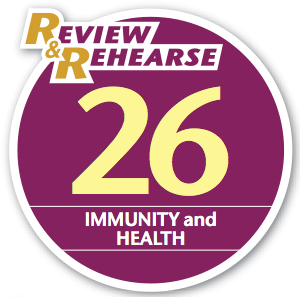
Instructions
Review the visual summaries and answer the essay questions below.
Make sure to enter a brief response that completely answers each question and explains your reasoning. When you click "Submit," you will be provided instant feedback, allowing you to check if your response is correct.
(This activity contains 12 total essay questions. Each new question will be revealed once you complete the preceding question.)
Question 26.1


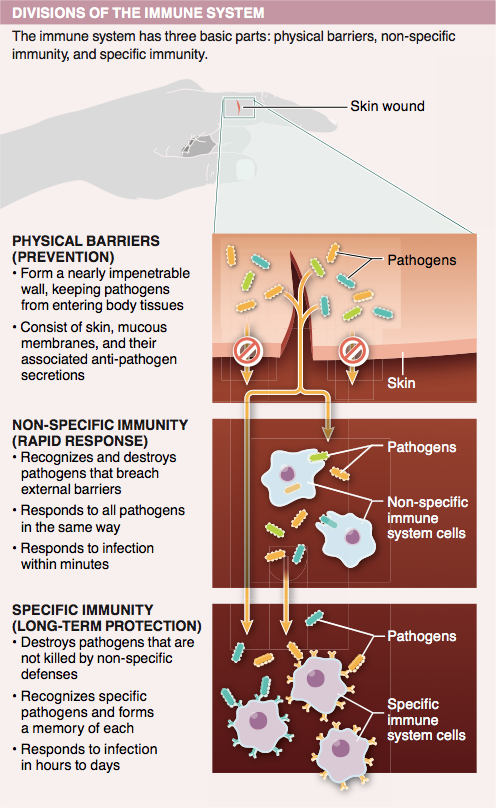
The immune system has three basic parts: physical barriers, non-specific immunity, and specific immunity. Physical barriers (including skin and mucous membranes) and non-specific immunity (the non-specific immune system cells) are the first lines of defense, serving to distinguish a substance as a pathogen and provide some initial protection. Cells of the specific immune system recognize and combat individual pathogens and remember them, so that the body can fight them more effectively in the future.
Question 26.2
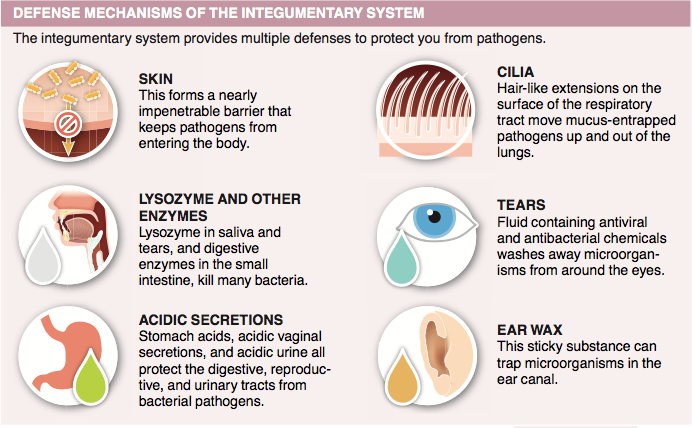
Lysozyme is an enzyme that kills bacteria by damaging their cell walls.
Question 26.3
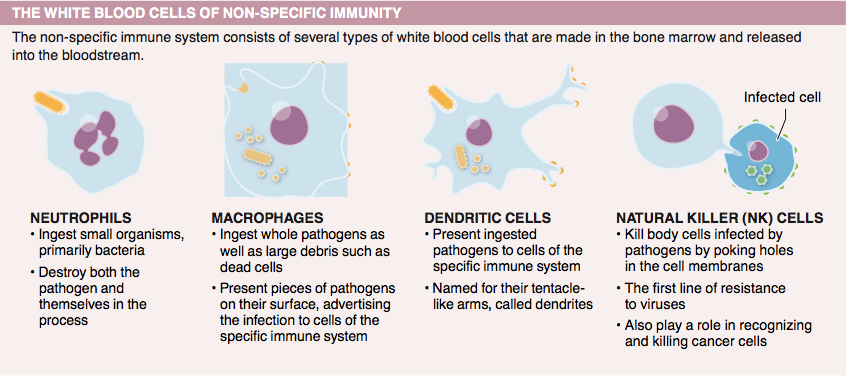
White blood cells can distinguish the body’s own cells (“self”) from invaders (“non-self”) because of unique molecules found on the surface of the foreign cells (pathogens). The immune cells’ surface receptors recognize these distinctive molecules, usually proteins, and bind to them. Because the body’s own cells do not contain these molecules, a cell that possesses any of them can be identified as an invader (non-self ) by the cells of the non-specific immune system.
Question 26.4
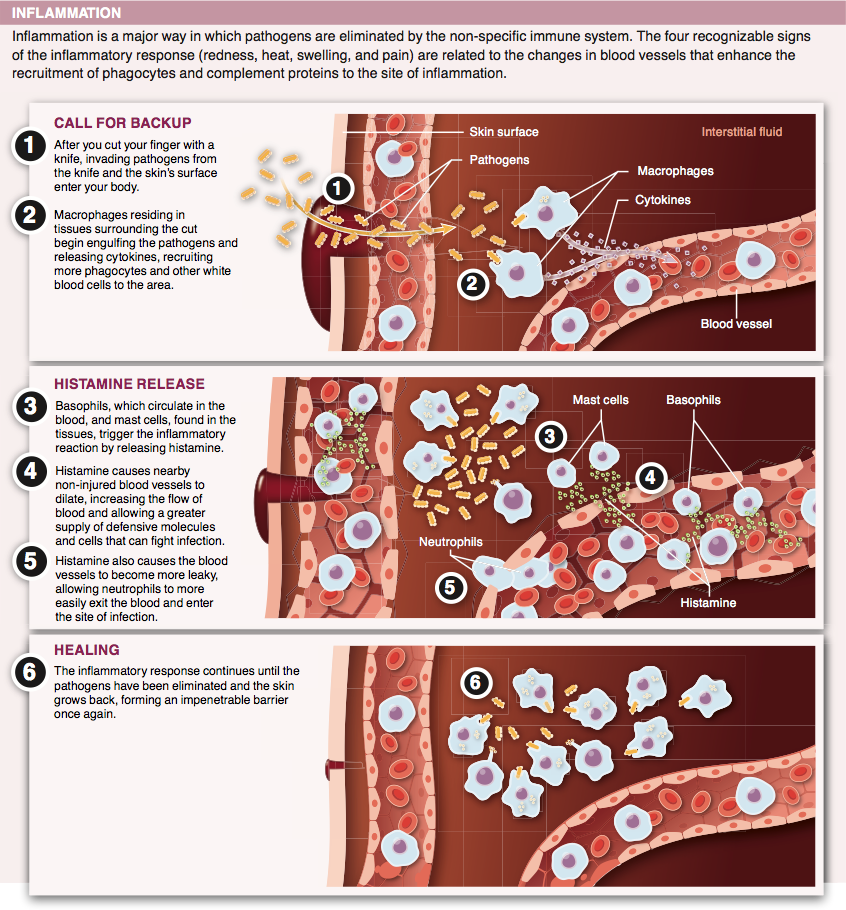
The four recognizable signs of the inflammatory response (redness, heat, swelling, and pain) are related to the changes in blood vessels that enhance the recruitment of phagocytes and complement proteins to the site of inflammation.
Question 26.5


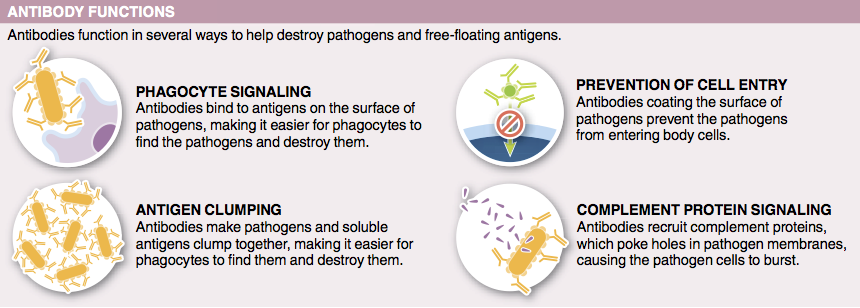
An individual who receives the chicken pox vaccine and is later exposed to the virus will not get the disease, because the body already has a memory of this virus and puts up a rapid defense through the activity of the specific immune system. After vaccination, this system manufactured a group of cells—called memory cells—that are primed to recognize and rapidly respond to the virus. In contrast, each year there are many different versions, or strains, of the influenza virus, and the strains are constantly changing. With each new flu season, the body encounters a slightly different form of influenza virus and thus a different set of antigens. Because the influenza virus adapts to changing conditions and evolves, the best protection is to get a flu shot—tailored as much as possible to that year’s flu strains—each year.
Question 26.6
idFAmMewtlj3GtXomXuEcjYtxrxyPE40icsFrS2wVQ7z2tOwRxhJeVgMrgPtj9AGfLBRzwO8HVL/ykTbqR23xCBjNfodjP4/Long-term protection from (immunity to) a specific pathogen can be developed in two ways: (a) exposure to the natural pathogen or (b) exposure to an altered version of the pathogen in a vaccine.
Question 26.7
x/T0Xg+VmRvTL9wpUMZ34CvBcv4im4JAwE6H4ZqVLuqmhmMfrJsGcAA4csOq42cQu+99WWUx624YQXz4q3k8W5IUffObeMyF9YTCkhiVxNGl1DjsGh+V3JcghND7rv5rWGbkJs/jBOWDL2tYZPA4bk/fPHp7HLAA/ZhHvwq52L9Obh9RpHlNkxw9hPlOPqJN6wL4Gh6Q4mwJzb8Bm8HWMg==After organ transplantation, an anti-rejection medication must be taken to suppress the recipient’s immune system and protect the transplanted organ against rejection.
Question 26.8
+QDIKaE7e3+r4UxR/QXeF7muPVZuGPBk3/MsNo/wzSefJHjVupPFNCHB3iPdmjRyyAqNtB7JHpjc95jjbfY51DBzXTXgP4YRgFLdyMtICcSLKryEuwwin60swpqQMLdiDCGZiDfBLWqIZEd3Bvx4GchyZirTnAaCY/jAy8P+vtKhFQj0nf9/agj198SRP0VzBZEI+B8xP2JlzicPZ5BdeA==The second time a person is exposed to a particular pathogen, memory cells produced during the primary response are ready to produce a secondary response through clonal selection.
Question 26.9

Effector cells are lymphocytes that recognize an antigen and immediately take some action that leads to its destruction. On average, it takes two weeks to produce enough effector cells (through clonal selection) to combat and vanquish an infection. A second group of lymphocytes, the memory cells, remember an antigen so that, if the body is infected with the same pathogen in the future, it will be ready to attack the invader relatively quickly (in a couple of days rather than two weeks). Memory cells remain in the lymph and blood, ready to respond if they encounter their specific antigen again.
Question 26.10
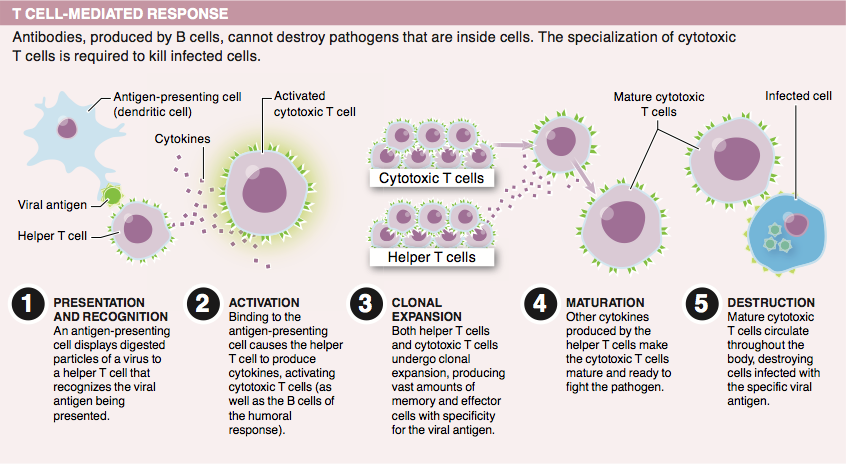
When cytotoxic effector cells encounter body cells that are infected with an invading pathogen, they kill these cells through apoptosis—programmed cell death. Although some of the body’s own cells are lost, the removal of these infected cells may be beneficial to the organism as a whole.
Question 26.11

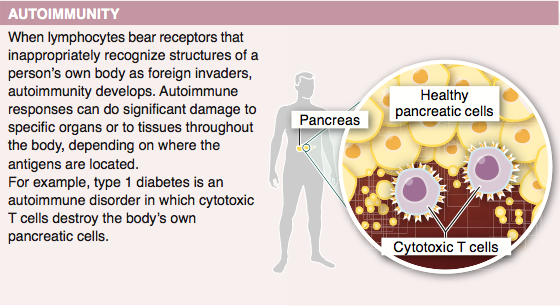
In autoimmune diseases, the body’s ability to distinguish “self” from “non-self” is impaired. Lymphocyte receptors wrongly recognize an individual’s own molecules or cellular structures as antigens, and the humoral and/or cell-mediated immune responses are initiated by these antigens.
Question 26.12
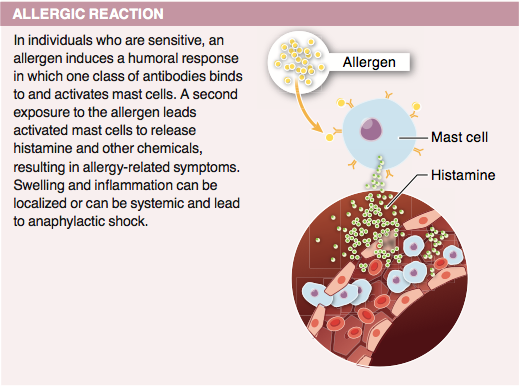
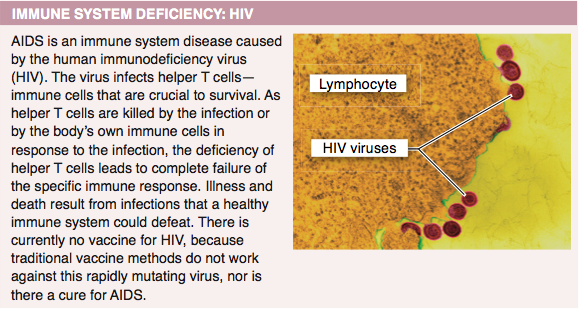
A severe shortage of helper T cells marks the progression from HIV infection to AIDS. Without helper T cells, B cells and cytotoxic T cells cannot be activated. Common pathogens that are normally kept at bay by a healthy individual can lead to debilitating illness and death in a person with full-blown AIDS.
Activity results are being submitted...